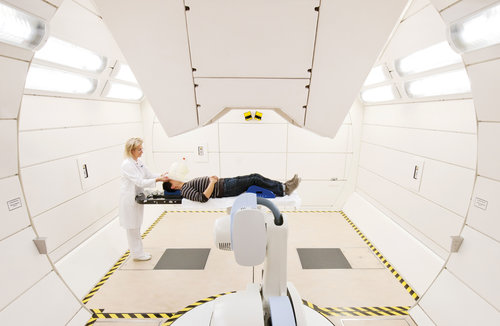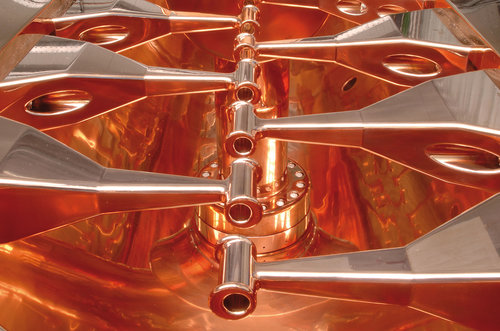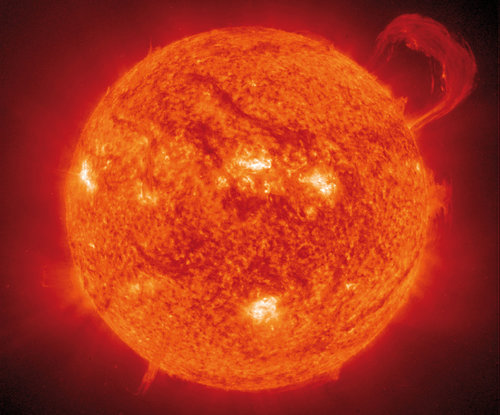
APPA — From atoms and planets to cancer treatment
Research at APPA (Atomic, Plasma Physics and Applications) will range from the investigation of fundamental processes in atoms and macroscopic effects in materials or tissues all the way to engineering and medical applications.


Biophysics

Carefully targeted beams of ions can be used very effectively to kill difficult-to-reach tumour cells while leaving surrounding healthy unharmed. Researchers at GSI have developed a groundbreaking cancer treatment employing ions that is now being used to treat patients successfully at hospitals in Heidelberg and Marburg in Germany, and Shanghai in China. Biophysicists also plan to use FAIR to develop a cancer therapy using protons that travel at 98 per cent of the speed of light. Such extremely fast protons could not only destroy tumours but also simultaneously be used to image them via proton radiography. As a result, therapy and diagnostics could be combined into ‘theranostics’. The biophysical research will also focus on other medical applications, such as the treatment of atrial fibrillation.
Materials research — From outer space to the interior of the Earth
Astronauts and technical equipment are exposed to cosmic rays coming from outer space as soon as they leave the Earth’s protective atmosphere. Nobody knows what effect this radiation would have on human beings undertaking long missions to destinations such as Mars. Moreover, the radiation could damage the electronic systems of a spaceship spending a long time in space. At FAIR, scientists will generate particle radiation such as that found in space in order to experiment with it. The biophysics and materials research areas include investigating how cells respond to cosmic rays and which materials can best withstand the extreme conditions of the space environment.
The experiments will also enable materials scientists to find out more about the interior of the Earth. We know that minerals subjected to the high pressures and temperatures found in the Earth’s interior can be greatly altered by the radiation emitted by naturally occurring uranium. FAIR will enable the scientists to investigate experimentally what influence the radiation has on minerals. Researchers can simulate such geological processes by bombarding minerals in high-pressure cells with high-energy ions.
Atomic physics

Besides the desire to discover and elucidate new phenomena, a typical trait of physicists is to call our existing notions into question. The scientists at FAIR will put an important fundamental theory of physics to the test: quantum electrodynamics (QED). This theory describes all the phenomena related to magnetism and electricity, including the behaviour of electrons in the electron shells of atoms. QED has been tested with a higher level of precision than any other theory to date. However, it is not certain whether this theory is also valid for extremely strong electric and magnetic fields. Such fields dominate the volume inside a uranium atom that is close to the nucleus (because the 92 protons in the nucleus together exert an extremely powerful positive charge). However, these fields cannot normally be studied because they are shielded by the surrounding shells of the 92 negatively charged electrons. At FAIR, scientists will be able to strip away virtually all the electrons to produce highly charged positive ions.
The scientists will inject these ions into storage rings, where they will be able to use them for high-precision measurements of the behaviour of the remaining electrons in ultra-strong electric and magnetic fields. These measurements will test the validity of fundamental theories such as QED and Einstein’s special theory of relativity. Atomic physicists also want to use FAIR to help solve one of the biggest mysteries of physics — whether matter and antimatter behave in the same way. In other words, they hope to determine if a fundamental symmetry of the Universe always holds — that antimatter is an exact mirror image of matter. If not, it could help explain why there is very much more matter in the Universe today than antimatter. The scientists plan to do this by generating antihydrogen and antihelium and find out how they differ from ‘conventional’ hydrogen and helium.
Plasma physics

Most of the matter we encounter in our everyday lives is either a solid, a liquid or a gas. However, Earth is an exception compared with the rest of the Universe. In fact, 99 per cent of the visible matter in the Universe is a mixture of free ions and electrons. Scientists refer to this state as plasma. It is created, for example, whenever matter is very hot, so that the atomic nuclei can no longer hold on to electrons in their electron shells. Stars such as the Sun consist of plasma; on Earth, plasma can be found in lightning bolts and candle flames. At FAIR, researchers will create especially dense plasmas like those inside planets and stars. The findings of plasma research are also interesting for many practical applications. For example, plasmas play a role in the processing of materials, the cleaning of surfaces, and the production of microscopic electronic components. Laser-generated plasmas are also creating promising new technologies for future particle accelerators.










